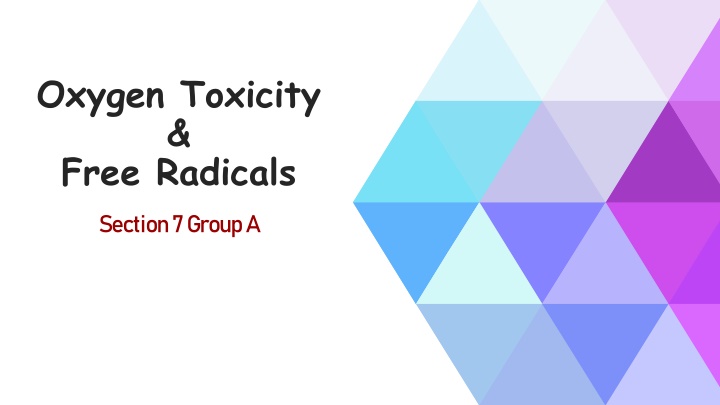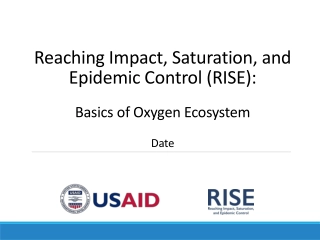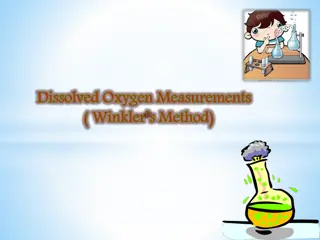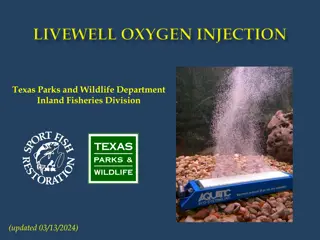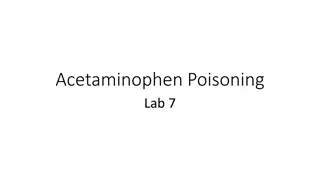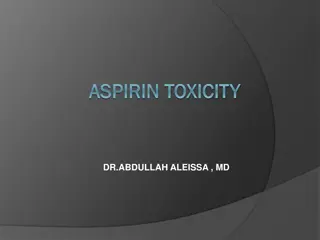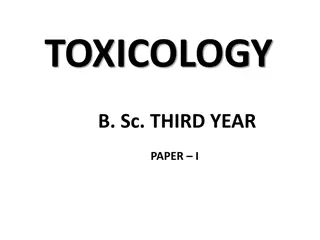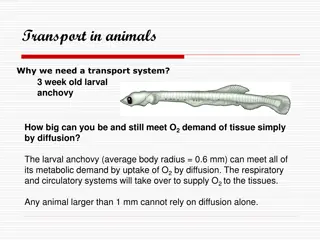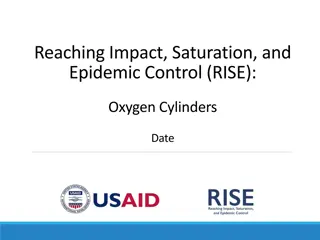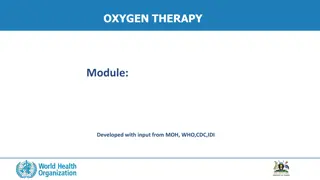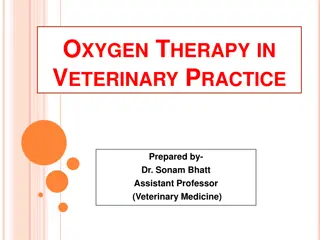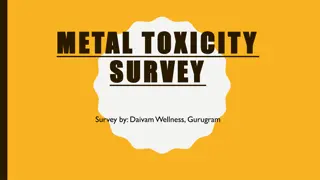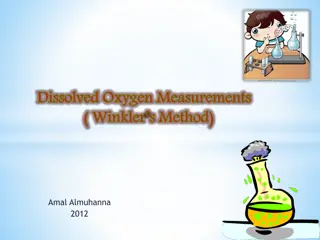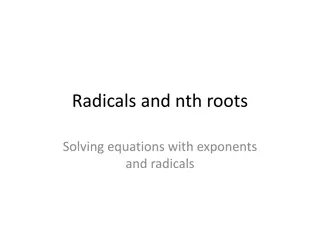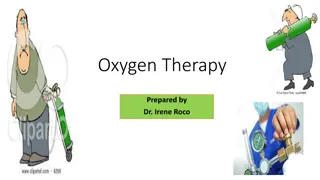Oxygen Toxicity & Free Radicals Awareness
The dangers of oxygen toxicity and the impact of free radicals on the body. Learn about symptoms, prevention, and the risks of high oxygen levels. Explore the definition of free radicals and how they affect biological systems.
Download Presentation

Please find below an Image/Link to download the presentation.
The content on the website is provided AS IS for your information and personal use only. It may not be sold, licensed, or shared on other websites without obtaining consent from the author.If you encounter any issues during the download, it is possible that the publisher has removed the file from their server.
You are allowed to download the files provided on this website for personal or commercial use, subject to the condition that they are used lawfully. All files are the property of their respective owners.
The content on the website is provided AS IS for your information and personal use only. It may not be sold, licensed, or shared on other websites without obtaining consent from the author.
E N D
Presentation Transcript
Oxygen Toxicity & Free Radicals Section 7 Group A
Learning Objectives Definition of oxygen toxicity. Why does breathing pure oxygen kill you? Symptoms & Prevention Definition of Free Radicals. Sources of Free Radicals Benefits & Damages Your Date 2
Definition of oxygen toxicity it is the oxygen which we breathe at higher than normal partial pressure and affects primarily the CNS , lungs, and eyes . Your Date 3 Your Footer Here
Why does breathing pure oxygen kill you? We need oxygen to live, But when there is too much of pure oxygen it can be deadly. Our blood take the oxygen we breathe in and bind it safely to the transport molecule called hemoglobin Your Date 4
If you breathe air with a much higher than normal O2 concentration, the oxygen in the lungs inhibit the blood sability to carry it away. The result is that free oxygen binds to the surface proteins of the lungs, interferes with the operation of the CNS and also attacks the retina Your Footer Here Your Date 5
Symptoms & Signs 4/17/2025 6
Prevention Oxygen toxicity is managed by reducing the exposure to increased oxygen levels Your Date 7 Your Footer Here
Definition of Free Radicals 1. It is an atom or group of atoms that have one or more unpaired electrons. Your Date 8 Your Footer Here
2. Radicals can have positive, negative or neutral charge. 3. They always need electrons Your Date 9 Your Footer Here
Oxygen Radicals There are many types of radicals, but the most common in biological systems are derived from oxygen, and known as reactive oxygen species (ROS) . Oxygen has two unpaired electrons in separate orbitals in its outer shell. Your Date 10 Your Footer Here
This electronic structure makes oxygen especially susceptible to radical formation Your Date 11 Your Footer Here
Sources A. Endogenous:- 1. Ischemia 2. respiratory burst By monocytes (macrophages) 3. lipid peroxidation chain 4. mitochondria cytochrome oxidase enzyme Your Date 12 Your Footer Here
B. Exogenous:- 1. drugs : antibiotics - anticancer 2. gasses: ozone / smoking 3. radiation: x-ray 4. Chemicals Your Date 13 Your Footer Here
4/17/2025 14
Benefits radicals, which are generated by phagocytic cells , kill invading pathogens asomething that causes disease (i.e. bacteriaor virus) I. Your Date 15 Your Footer Here
II. radicals are involved in intracellular signaling. For example, addition of superoxide or hydrogen peroxide to a variety of cultured cells leads to an increased rate of DNA replication and cell proliferation -in other words, these radicals function as mitogens Your Date
Damages I. oxidative damage to DNA leading to various human degenerative and autoimmune diseases. II. damage to cellular membranes (plasma, mitochondrial and endomembrane systems), which is started by a process known as lipid peroxidation. Your Footer Here Your Date 17
III. the ability to damage all macromolecules, including lipids, proteins and nucleic acids. Your Date 18
IV. they damage other cells and take their energy Your Date 19 Your Footer Here
Antioxidants Antioxidants are chemicals that prevent the effects of free radicals. Your Date
How do antioxidants work? They donate an electron to free radicals, thereby reducing their reactivity. What makes antioxidants unique is that they can donate an electron without becoming reactive free radicals themselves. Your Date 21 Your Footer Here
Summary Oxygen Toxicity Free Radicals
